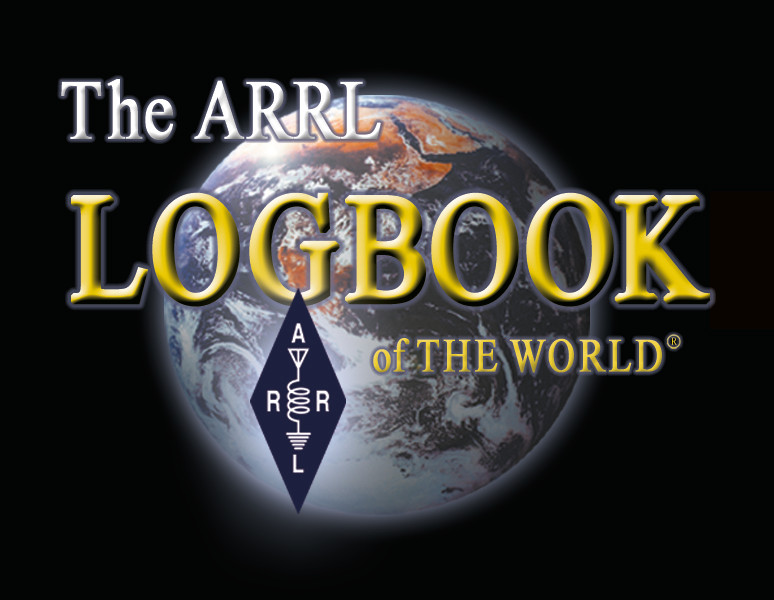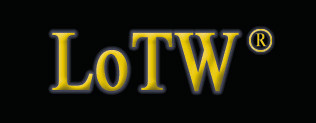Submitting QSOs to LoTW
A QSO submitted to LoTW must at minimum specify
- your QSO partner's callsign (see "Logging the Right Callsign" below)
- the date and time at which the QSO started, in UTC
- the band on which the QSO was made
- the mode or mode group with which the QSO was made
If the QSO was made via a satellite, its propagation mode must be set to SAT, and it must specify the name of the satellite used.
Many logging applications can digitally sign QSOs and submit them to LoTW. If your logging application is capable, you may find using it to be the most convenient approach:
| Submitting QSOs From a Logging Application | |
Alternatively, you can direct TQSL to digitally sign QSOs in an ADIF file or a Cabrillo file, and submit them to LoTW via the internet:
| Submitting QSOs with TQSL | |
If your computer does not have internet access, you can direct TQSL to digitally sign QSOs in an ADIF file or a Cabrillo file, and save them to a file, which you can then convey to a computer with internet access and upload or email to LoTW:
| Submitting QSOs with TQSL from a Computer without Internet Access |
Using a logging application to record your QSOs is recommended, but TQSL does have the ability to create and edit an ADIF file, which can then be digitally signed and submitted to LoTW as described above.
Logging the Right Callsign
For your QSO to be confirmed via LoTW, it must match the information your QSO partner submits. In particular,
- the callsign you log must match the callsign your QSO partner uses to submit your QSO
- the callsign you use to submit your QSO must match the callsign your QSO partner logs
When Mike K1MK works Rick K1MU, there's no ambiguity; Mike logs the QSO with K1MU and uses his K1MK Callsign Certificate to submit this QSO to LoTW. But suppose Mike works Robert KC2YWE/QRP; should he log this QSO with KC2YWE/QRP or with KC2YWE?
To maximize the probability that both parties in a QSO act consistently and therefore obtain LoTW confirmation, the following "best practices" are recommended:
- Log the callsign that your QSO partner sent over-the-air unless your QSO partner's over-the-air callsign includes a non-standard suffix like /QRP or /LH, in which case you should ask him or her what callsign they'll be using to upload your QSO to LoTW, and log that callsign
- Submit your QSO to LoTW using the Callsign Certificate for the callsign that you used over-the air; if you operated as P5DX/QRP, for example, then submit your QSOs using a Callsign Certificate that specifes P5DX/QRP as its callsign.
Note: some DX and contest stations won't log non-standard suffixes like /QRP or /LH or the three-letter county abbreviations used when activating a US county. If you submit your QSO using a Callsign Certificate whose callsign specifies one of these non-standard suffixes but don't receive a timely confirmation, try resubmitting your QSO using a Callsign Certificate whose callsign omits the suffix.
Logging QSOs with New Modes
LoTW accepts all modes and submodes defined in the ADIF Specification. To log QSOs in a new mode not yet added to the ADIF Specification, "map" the new mode to a a mode supported by LoTW, as described here.
Submitting QSOs that Won't Count for DXCC Awards
QSOs made while on a ship, or from certain locations are not valid for DXCC awards, but may be valid for other awards, like VUCC. QSOs made while airborne are not valid for DXCC or VUCC awards. To submit QSOs that are not valid for DXCC,
- Request an additional Callsign Certificate for the callsign you'll be using; in step 3.a.2, set the DXCC entity to -NONE-
- After accepting your requested Callsign Certificate, define a new Station Location that references this Callsign Certificate and specify the appropriate CQ zone, ITU zone, IOTA reference number, and grid square unless you are operating airborne, in which case no grid square should be specified
- Use the new Station Location when submitting QSOs to LoTW that aren't valid for DXCC.
Errors Reported by TQSL
If TQSL detects any of the following errors in a QSO, it displays an Errors Detected window with the details:
- the QSO does not specify a valid amateur callsign and the Allow nonamateur call signs option is not enabled; a valid amateur callsign
Note: LoTW will not accept QSOs with callsigns that don't comply with the above requirements, so leaving TQSL's Allow nonamateur call signs option disabled is recommended.- contains only the letters A through Z, the digits 0 through 9, and the slash character - contains at least one number and one letter - is at least three characters in length - does not begin or end with a slash character - does not begin with 0 - does not begin with 1 unless it begins with 1A, 1M, or 1S - the QSO's callsign could not be identified within a Cabrillo record because the callsign is not at least 4 characters in length with at least one letter and one number:
Unable to find a valid call-worked field This error can be overcome by specifying a Cabrillo Contest Definition that identifies the position of the callsign within each record - the QSO does not specify a valid band
- the QSO does not specify a valid mode
- the QSO does not specify a valid date and time
- the QSO's date and time are inconsistent with the date range in the Callsign Certificate specified by the Station Location you selected when digitally signing the file containing the QSO
- the QSO specifies an invalid Satellite name
- the QSO specifies a Satellite name, but the QSO's propagation mode is not set to SAT
- the Callsign Certificate (specified by the Station Location you selected when digitally signing the file containing the QSO) has expired or been superceded
- the exact same QSO has already been submitted to LoTW (this is referred to as a duplicate)
Clicking the Errors Detected window's Ignore button directs TQSL to not process the erroneous QSO and continue digitally signing the log file's other QSOs. Clicking the window's Cancel button directs TQSL to terminate the operation without submitting or saving any QSOs.
After correcting the error(s) in your log file that prevented QSOs from being digitally signed, assemble (or direct your logging application to export) an ADIF or Cabrillo file containing a record for each QSO that wasn't digitally signed, and direct TQSL to digitally sign and submit this file to LoTW.
If directed to submit QSOs to LoTW via the internet, TQSL will inform you if a connection with LoTW cannot be established. To further diagnose this condition, see "When Submitting QSOs to LoTW " in the troubleshooting section.
Viewing the Results of Submitting QSOs
Some logging applications can update your logged QSOs to reflect their acceptance and confirmation via LoTW. Alternatively, you can log in to your LoTW Account to see if LoTW has processed the QSOs you submitted, and determine whether they were accepted and confirmed:
| Viewing Processed and Accepted QSOs via your LoTW Web Account | |
A QSO submitted by TQSL and processed by LoTW will not be accepted if the QSO specifies a callsign that the ARRL either considers invalid (e.g. P5RS7) or has not yet validated.
A QSO you submit will only be reported as confirmed if your QSO partner submitted his or her QSO description before you did. To determine whether an accepted QSO has subsequently been confirmed as a result of action by your QSO partner, you can query LoTW:
| Viewing Confirmed QSOs via your LoTW Web Account |
Correcting Errors in Submitted QSOs
If you submit a QSO that specifies an incorrect callsign, date, time, frequency, band, mode, propagation mode, or satellite, you can submit a corrected QSO to LoTW. If your submitted correction matches an existing QSO's callsign, date, time (to the second), band, and mode, then LoTW will update the existing QSO's other components -- like frequency or propagation mode. However, if your submitted correction does not match an existing QSO's callsign, date, time (to the second), band, and mode, LoTW will create a new QSO, and make no change to any existing QSO.
When submission of a corrected QSO results in the creation of a new QSO, the original QSO remains in place, uncorrected. If the original QSO has not been confirmed, it's harmless: it won't match the information your QSO partner submits and so will never be confirmed.
If the QSO you're correcting is already confirmed but no award credit has been granted, then in these two cases the confirmation will reference the new (corrected) QSO, rendering the original QSO unconfirmed:
- its mode changes from a mode group (like Phone, Data, or Image) to a member of that mode group (like SSB) that exactly matches the mode submitted by your QSO partner
- its date and time more closely matches the date and time submitted by your QSO partner than did the date and time specified in the original QSO
Any other attempt at changing the callsign, date, time, band, or mode of a confirmed QSO will result in the original QSO remaining unmodified and confirmed.
If the QSO you're correcting is already confirmed, award credit has been granted, and the attempted correction would alter a submitted or awarded DXCC, VUCC, WAS, or WPX credit, then the attempt will fail. This failure will be noted in the Logbook Activity Record for the submission with a message noting that the requested action could not be completed due to an award credit constraint.
If the Station Location with which you upload a QSO is either missing information (e.g. your Grid Square) or contains incorrect information (e.g. an incorrect US State), correct the Station Location, and use it to resubmit the QSO to LoTW. The resubmitted QSO's callsign, band, mode, date, time, and station callsign must exactly match those elements of the QSO to be corrected; if so, LoTW will update the QSO with the information from your Station Location. If your QSO has already been confirmed, your QSO partner's confirmation will be updated with the information from your submitted Station Location. Thus one must be particularly careful to submit or resubmit QSOs with the correct Station Location.
Deleting Submitted QSOs
Once submitted to LoTW, a QSO cannot be deleted; it can only be corrected as described above.
Additional Information


